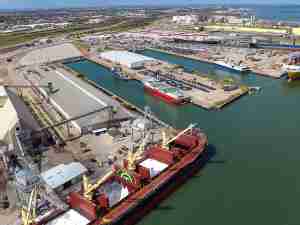Adding a roof at Cosan's Rumo terminal in Santos and improved rail access to it would improve efficiency, said Glynne Williams Mello of Williams (Servicos Maritimos) Ltda, which collects data on lineups of vessels at Brazilian ports.
Copersucar's plans to demolish a warehouse at Santos and replace it with a larger one would also boost throughput during peak periods, he told Reuters in an interview.
Shipping delays at Santos, which is by far the biggest sugar port in Brazil, the world's top producer and exporter of the sweetener, have been a factor behind a recent rally in sugar futures prices to near four-month highs.
A lack of availability of new-crop Brazilian sugar, due to a combination of weather factors and aging cane plants, has led to a sharp drop in Brazilian sugar exports since the start of the harvest in the centre-south in April up to mid-July, compared with the same year-ago period.
Williams said he expected plans for the roof to be built at the Rumo terminal, likely to take place in the next inter-crop period during the first quarter of 2012, would boost efficiency and productivity by reducing load times when it rained.
"If you have a roof, you will win a lot of time," said Williams.
"I am sure other terminals will follow this lead. This will be a great thing for Santos. We will see bigger productivity. All the time you lose due to stoppages caused by rains, will be eliminated."
Rumo's investment in boosting rail links to its terminal, will reduce risks of lengthy truck lineups to load sugar onto vessels.
Dredging to boostd bulk loading
Williams said dredging by port authorities at Santos was proceeding slowly, but these investments would enable bigger vessels to load sugar, further improving efficiency at the port to help accommodate a growing world appetite for the sweetener.
Williams also noted a trend to export bagged white sugar from Santos in containers due to a lack of availability of aging, small vessels.
"The use of container vessels is increasing every year," he said. "For smaller quantities of sugar, people are using container ships more and more."
The shipping executive said that while sugar shipping delays from Santos were now slowing down, it was difficult to predict if delays would ease or increase as the harvest approached its peak.
"It depends on the pace of nominations of vessels by buyers," Williams said. (Reuters)










